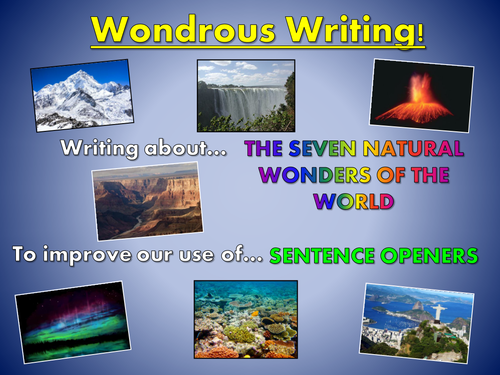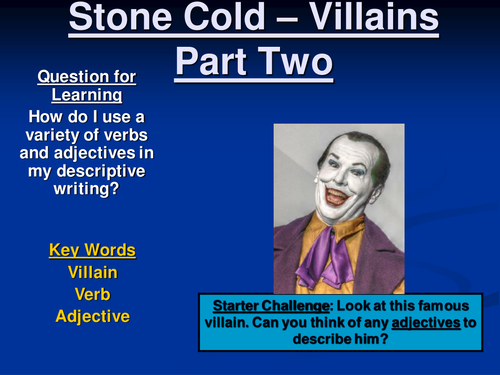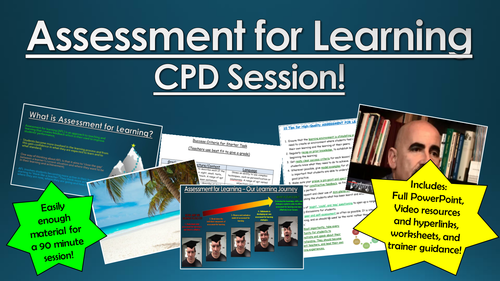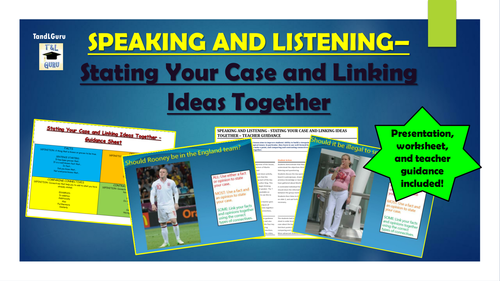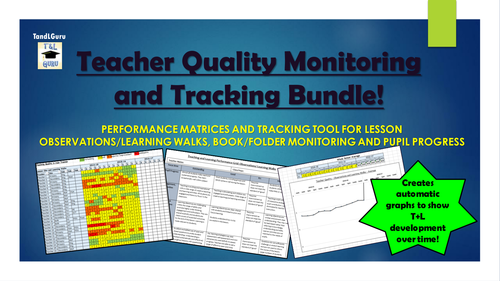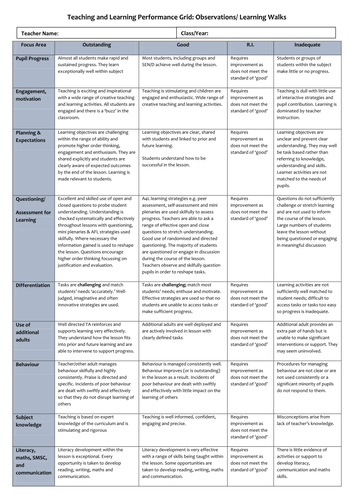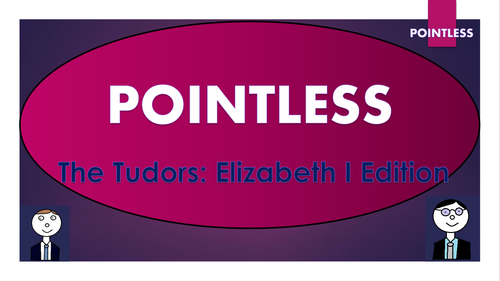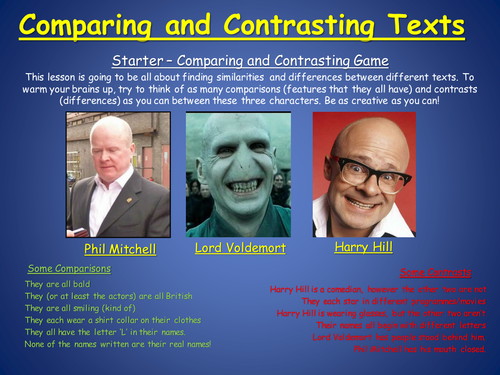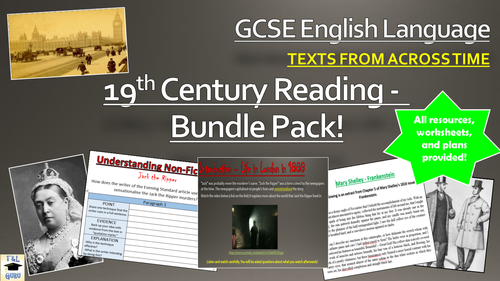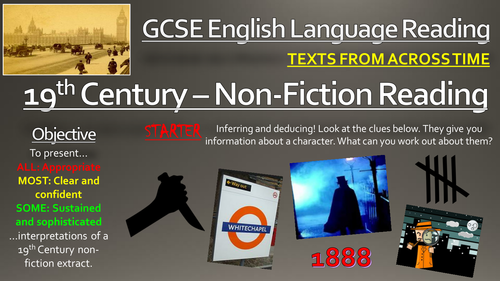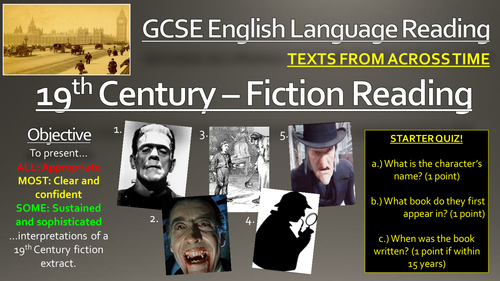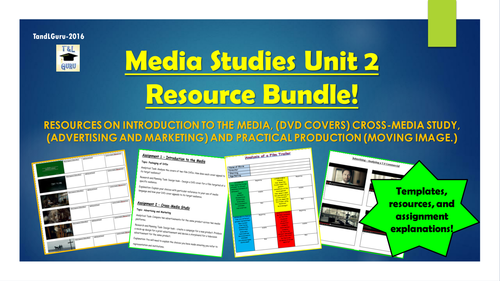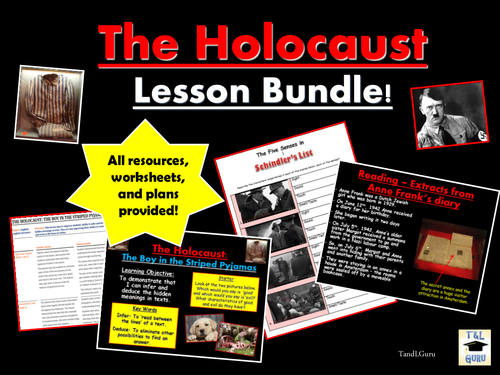
3k+Uploads
1967k+Views
2278k+Downloads
All resources

Wondrous Writing! Seven Wonders of the World - Sentence Openers
Wondrous Writing is an interesting and effective way to enable young people to build their writing skills. Focussing on one key writing skill, students compose sentences during timed intervals, using picture prompts as inspiration. This aids them in constructing a larger, more substantial piece of writing over the course of the lesson. Assessment for Learning is utilised throughout, with success criterias provided for students to peer/self assess both before and after the main task.
The focus for this lesson is sentence openers - utilising the topic of 'The Seven Wonders of the World.' Included in this pack is:
- Whole lesson PowerPoint, complete with visual stimuli for writing;
- Hyperlink to stopwatch app;
- Writing Template
- Writing to Describe Help-sheet
- Success Criteria - Peer/Self-Assessment Form

George's Marvellous Medicine - Assorted Resources! (Worksheets, PowerPoints, Assessments etc.)
This pack contains a vast number (I think there's about 20 resources here) of activities, resources, and ideas for the teaching of Roald Dahl's 'George's Marvellous Medicine.' They should provide an excellent starting point for anybody who wants to teach the book and is looking for some inspiration for individual lesson content/ tasks. The vast majority of these tasks can be adapted for differing age groups/ ability ranges/ needs.
The pack contains resources that focus on the key themes in the book, such as family and emotions. There are also resources that enable to build individual reading skills, such as inferring and deducing, pulling out quotations, and analysing language. In writing, students learn to think imaginatively and create texts appropriate to audience and purpose.
All images are licensed for commercial use, and are cited on the final slides of the PowerPoints.

Stone Cold - Assorted Resources! (PowerPoints, Activities, Worksheets, Templates, etc.)
This pack contains a vast number (I think there's about 20 resources here) of activities, resources, and ideas for the teaching of Robert Swindell's 'Stone Cold.' They should provide an excellent starting point for anybody who wants to teach the book and is looking for some inspiration for individual lesson content/ tasks. The vast majority of these tasks can be adapted for differing age groups/ ability ranges/ needs.
The pack contains resources that focus on the key themes in the book, such as stereotyping, alienation, and homelessness. There are also resources that enable to build individual reading skills, such as inferring and deducing, pulling out quotations, and analysing language. In writing, students learn to think imaginatively and create texts appropriate to audience and purpose.
All images are licensed for commercial use, and are cited on the final slides of the PowerPoints.

Out of the Blue - Simon Armitage - 9/11 Poem
These informative and engaging resources enable students to build the skills needed to interpret and analyse the langauge used in poems. These resources also give students a strong foundation knowledge, including the SMSC implications, of the events of 9/11 - an important historical day that should never be forgotten.
Students learn through the following tasks:
- Collecting and discussing knowledge of the events of the day through an interactive starter task;
- Reading the poem 'Out of the Blue' and identifying the descriptive devices throughout the poem;
- Discussing a model analytical paragraph about the language used in the poem, in order to form their own success criteria;
- Using a template to form their own analytical paragraphs about the language used in the poem;
- Using peer or self-assessment in order to establish their success at analysing language.
The following resources are provided:
- Engaging and colourful step-by-step PowerPoint
- Poem
- Teacher lesson guidance;
- Identifying worksheet;
- Analysis template;
- Writing to analyse help-sheet
- Analysis model
All images are licensed for commercial use, and are cited on the final slide of the PowerPoint.

Assessment for Learning CPD Session!
This CPD session offers an engaging and original approach to introducing or revisiting assessment for learning. Grounded in educational research, this CPD session is interactive, well-structured, and has been successfully tried and tested. The aim of the CPD session is to develop the knowledge, skills, and strategies needed in order to utilise assessment for learning even more effectively in lessons, and it achieves this by embarking upon the following learning journey:
1. Understand what assessment for learning is and why it is effective.
2. Break down the individual components of assessment for learning.
3. Observe and evaluate a model of assessment for learning
4. Collaborate in developing your own assessment for learning strategies.
Included in this pack are: Full PowerPoint presentation, videos for analysis, hyperlinks to Youtube videos, resources for CPD activities, instructions and guidance for trainers/ presenters.
All images and videos are licensed for commercial use, and are cited on the final slide.

Murder Mystery Investigation!
There's been a murder!
This exciting, engaging investigation activity allows students to control the direction of their own learning, through speaking, listening, discussing, and reasoning. I initially created these resources to provide something interesting for the students to engage with for their Functional Skills Speaking and Listening discussions, but it has since been used across Citizenship and PSHE departments, as well as by form groups, as a catalyst for social and moral discussions.
Students play detectives aiming to solve the case of a death of an old lady. Using a range of evidence, from video clips, to interviews with key suspects, to positioning events on maps, students work in teams to try and solve the case. They must use skills of communication, to decide which leads to prioritise, and which evidence to discount. They also need to use their skills of literacy, to read and understand key evidence, and skills of numeracy to ensure that they keep their case within budget!
Included in this resource pack are:
- Full PowerPoint lesson talking students through the case;
- A range of 'Exhibits' - evidence that the students use to build a case, including video clips;
- A map of the local area, to help visualise the events leading up to the death;
- Budgetting and recording sheets to track their progress;
- A prime supsects list;
- Clue cards containing interviews with prime supsects;
- Full teacher guidance.
Considering the time and effort that it took to create these resources, I think that they offer exceptional value. Whenever I have used this activity before, it has taken at least 2-3 lessons, including the introduction, investigation, conclusions, and evaluation. I orignally have used this with lower ability Year 8,9, and 10 groups, but colleagues have adapted it easily for students of all key stages.
All images have been cited at the end of the PowerPoint presentation and are licensed for commercial use.

Speaking and Listening - Stating Your Case and Linking Ideas Together
This lesson serves as an engaging and confidence-building introduction to any speaking and listening unit. Students learn to use facts and opinions to state their case about a number of interesting and topical issues, whilst also building towards using a range of connectives to link their ideas together.
The lesson also links strongly to PSHE and Citizenship, as students discuss a range of moral and ethical issues, whilst simultaneously building their skills of communication.
Included in the lesson are: a visually stimulating, step-by-step PowerPoint presentation, a student guidance sheet to scaffold and shape student responses, and teacher guidance to aid practitioner implementation.

Teacher Quality Monitoring and Tracking Big Bundle!
Contained in this bundle are all of the teacher performance grids, (lesson observations, book monitoring, and pupil progress) in addition to the teacher quality trackers. Used in combination, these resources enable school leaders and data managers to easily and precisely monitor teacher quality over time.
The Teacher Performance Grids contain:
1.) Observation & Learning Walk Performance Grid
2.) Marking and Feedback Performance Grid
3.) Pupil Progress Performance Grid
For use alongside lesson observations, learning walks, book monitoring, and discussions about pupil progress, these succinct performance grids enable observers to gauge, categorise, and feedback on teaching and learning using OFSTED guidance for effective teaching. The documents provide descriptors of 'outstanding', 'good', 'requires improvement' and 'inadequate' practice within appropriately considered teaching and learning focus areas, for example: Questioning, Positive Feedback, Use of Additional Adults, Noticing Data Trends and Plotting Interventions etc. Schools who opt to grade individual teachers on their performance have noted that these are helpful aids in arriving at an overall judgement.
The Teacher Quality Trackers allow teaching and learning leaders to monitor the quality of teaching across their departments/ schools over time, focusing on the triangulated performance indicators of: Lesson Observations/Learning Walks, Book/Folder Monitoring, and Pupil Progress. Users can easily view changes in individual, department, key stage, and whole school teaching and learning quality over time.
The tools are automatically formatted to colour code entries from the codes 1 (Outstanding = Green) to 4 (Inadequate = Red) Each entry also updates the 'average school performance' table, which in turn alters the line graph showing quality over time. This enables leaders to easily identify trends in performance data. Furthermore, there is also space in which users can give details of CPD sessions and interventions, in order to a provide a foundation to evaluate their impact.
Individual pages are provided for observations, book monitoring, and pupil progress.
'3 captures per year' and '6 captures per year' versions are provided, to allow for schools that measure quality at variable intervals.

Teacher Quality Tracking System
These well-designed, easy to use teacher quality trackers allow teaching and learning leaders to monitor the quality of teaching across their departments/ schools over time, focusing on the triangulated performance indicators of: Lesson Observations/Learning Walks, Book/Folder Monitoring, and Pupil Progress. Users can easily view changes in individual, department, key stage, and whole school teaching and learning quality over time.
The tool is automatically formatted to colour code entries from the codes 1 (Outstanding = Green) to 4 (Inadequate = Red) Each entry also updates the 'average school performance' table, which in turn alters the line graph showing quality over time. This enables leaders to easily identify trends in performance data. Furthermore, there is also space in which users can give details of CPD sessions and interventions, in order to a provide a foundation to evaluate their impact.
Individual pages are provided for observations, book monitoring, and pupil progress.
'3 captures per year' and '6 captures per year' versions are provided, to allow for schools that measure quality at variable intervals.

Triangulation of T+L Quality: Grids for Observations, Book Monitoring, and Pupil Progress
This resource pack is comprised of:
1.) Observation & Learning Walk Performance Grid
2.) Marking and Feedback Performance Grid
3.) Pupil Progress Performance Grid
For use alongside lesson observations, learning walks, book monitoring, and discussions about pupil progress, these succinct performance grids enable observers to gauge, categorise, and feedback on teaching and learning using OFSTED guidance for effective teaching. The documents provide descriptors of 'outstanding', 'good', 'requires improvement' and 'inadequate' practice within appropriately considered teaching and learning focus areas, for example: Questioning, Positive Feedback, Use of Additional Adults, Noticing Data Trends and Plotting Interventions etc. Schools who opt to grade individual teachers on their performance have noted that these are helpful aids in arriving at an overall judgement.

Pupil Progress Performance Grids
For use alongside data captures and discussions about pupil progress, this succinct performance grid enables observers to gauge and categorise department and individual teacher approaches to pupil progress data, using OFSTED guidance. The first page of the document provides descriptors of 'outstanding', 'good', 'requires improvement' and 'inadequate' feedback within appropriately considered focus areas, for example: Rate of Progress, Accuracy, Noticing Trends and Plotting Interventions, etc. Schools that already employ this tool often opt to highlight the descriptors on this page as they complete the scrutiny, thus creating a bigger picture of the strengths and areas for improvement observed. This can also be a helpful aid in arriving at an overall judgement, should your school opt to arrive at one. The second page allows observers to further pinpoint and describe the 'www' (what went well) and 'ebi' (even better if) aspects of the feedback, to aid teacher/department in improving their practice.

Pointless - History Bundle Pack - The Tudors (3 full games included!)
Based on the popular game show 'Pointless', these resources are perfect for use as a starter activity, plenary, or revision tool. Editable, so that you can change to any other topic or change the questions/answers. Containing sound clips, engaging visuals, and suitably challenging questions, these resources are effective at both promoting engagement and enhancing learning.
There are three fully functional and challenging games, including:
- The Tudors (easier)
- Henry VIII (intermediate)
- Elizabeth I (more difficult)
Each game contains four full rounds, which are fun, interesting, and promote deeper thinking in students.
The nature of the game ensures that this resource can challenge students of all levels.

New GCSE English Language - Comparing and Contrasting
This informative and engaging double lesson aims to improve students’ ability to compare and contrast two different texts based on a similar subject. They will focus particularly on the purpose, audience, language, and structure of texts, and will learn to use comparing and contrasting connectives to highlight any similarities and differences. This has always been a crucial skill in English, but has an increased importance in the new GCSE for English Language, as there is a greater requirement for students to be able to make links and comparisons between texts.
The lesson follows a clear and logical learning journey, with students learning to:
- Understand the key terms 'compare' and 'contrast', and the importance of these skills in English;
- Categorise the different features that they can compare, under the headings 'Purpose', 'Audience', 'Language' and 'Structure;'
- Read (and identify the key features within) two morally and ethically intriguing texts, offering diverse views of young people in the media;
-Compare the two texts, using a clear and concise template, and newly-acquired knowledge of different types of connectives;
- Peer-assess each other's comparative essay attempts.
Included in this resource pack are:
- Whole double lesson, colourful and engaging PowerPoint presentation (Including assessment for learning referral slides)
- Cards for card-sorting activity;
- Two interesting and thought-provoking non-fiction media extracts (one a newspaper extract from The Evening Standard, and another a persuasive leaflet, both focused on the issue of how young people are perceived.)
- Template for main comparative analysis task;
- Full teacher guidance plan.
All images are licensed for commercial use and are cited on the final slide of the PowerPoint presentation

New GCSE English Language Reading: 19th Century Bundle Pack! (Context, Fiction, Non-Fiction)
This bundle contains all of the resources for:
- New GCSE English Language Reading: 19th Century Context; New GCSE English Language Reading: 19th Century Fiction; New GCSE English Language Reading: 19th Century Non-Fiction.
These informative and engaging lessons enable students to build the skills needed to interpret and analyse 19th Century non-fiction texts. This will aid students through the new GCSE English Language - for which they need to become confident readers of 19th, 20th, and 21st Century fiction and non-fiction texts. These resources give students a strong foundation of knowledge of features of fiction and non-fiction texts in the 19th Century, using a range of visual and varied resources. There are easily enough resources for at least two lessons within this resource pack.
The following resources are provided:
- Engaging and colourful step-by-step PowerPoint presentations;
- Visually engaging worksheets;
- Resources for all activities;
- Writing purposes help-sheet, to aid longer writing tasks;
- All Lesson plans;
All images are licensed for commercial use, and are cited on the final slide of each PowerPoint. These lessons can also be bought individually - priced at £2.00 each

New GCSE English Language Reading: 19th Century Non-Fiction
These informative and engaging resources enable students to build the skills needed to interpret and analyse 19th Century non-fiction texts. This will aid students through the new Paper 2 Section A of GCSE English Language - for which they need to become confident readers of 19th, 20th, and 21st Century non-fiction texts. These resources give students a strong foundation of knowledge of features of non-fiction texts in the 19th Century, using newspaper stories from the time based on 'Jack the Ripper' as the predominant examples. There are easily enough resources for at least two lessons within this resource pack.
Students learn through the following tasks:
- Inferring and deducing contextual knowledge through an interactive starter task;
- Understanding the features of London in 1888 through a video introduction;
- Building close reading skills through a study of a non-fiction extract about Jack the Ripper;
- Answering exam-style questions interpreting and inferring the key meanings in the text;
- Using models and templates to write extended analysis responses about the language used in the non-fiction extract;
- Peer assessing their partners' learning attempts.
The following resources are provided:
- Engaging and colourful step-by-step PowerPoint;
- Jack the Ripper newspaper extract;
- Teacher lesson guidance;
- Interpretation worksheet;
- Analysis worksheet;
- Writing to analyse.
All images are licensed for commercial use, and are cited on the final slide of the PowerPoint.

New GCSE English Language Reading: 19th Century Fiction
These informative and engaging resources enable students to build the skills needed to interpret and analyse 19th Century fiction texts. This will aid students through the new Paper 1 Section A of GCSE English Language - for which they need to become confident readers of 19th, 20th, and 21st Century texts. These resources give students a strong foundation of knowledge of features of fiction texts in the 19th Century, using Mary Shelley's Frankenstein as the predominant example. There are easily enough resources for at least two lessons within this resource pack.
Students learn through the following tasks:
- Gauging and collaborating previous knowledge through an interactive starter task;
- Identifying the descriptive devices in sentences written about 19th Century characters;
- Building close reading skills through a study of a fiction extract from Frankenstein
- Answering exam-style questions interpreting and inferring the key meanings in the text;
- Using models and templates to write extended analysis responses about the descriptive language used in the fiction extract;
- Peer assessing their partners' learning attempts.
The following resources are provided:
- Engaging and colourful step-by-step PowerPoint
- Frankenstein extract
- Teacher lesson guidance;
- Interpretation worksheet;
- Analysis worksheet;
- Writing to analyse help-sheet
All images are licensed for commercial use, and are cited on the final slide of the PowerPoint.

Data Analysis Headline Template and Data-Inputting Time-Saving Tool!
The data analysis headline template is a neat, compact, and visually-engaging tool for school leaders, teaching and learning leaders, curriculum leaders, or any other school-based staff responsible for the inputting and analysis of pupil progress data.
All that the resource requires is for users to input raw pupil progress data, and it will automatically calculate percentages, and create colourful pie-charts to provide detailed yet easily-readable headline figures. Each excel sheet has been designed to fit onto one A4 page, for easy reading, and this includes space for users to input analysis of the data and plot interventions.
5 sheets have been pre-populated with example data, but the user can create as many extra sheets as they want by simply right-clicking the tabs, selecting 'move or copy', and then ticking the 'create copy' box. The sheets that are created will contain all of the same formulas and pie-charts, to enable you to create page after page of detailed progress analysis!
All of the columns and row names in the tables can be edited to suit the language used by your school, but please avoid altering the percentages rows, as you may lose the formulas.
The data inputting resource provides all of those responsible for data tracking and monitoring with a valuable time-saving tool to ensure that data can be well-presented, and trends can be easily identified.
Fourteen separate sheets have been provided (one for each subject) and four tables are formulated to allow you to break down pupil progress data by any category that you require.
Simply input the total number of students taking the subject for each category, and the number making progress by each measure, and the template will automatically provide you with the percentages, and also create pie charts to show headline data visually.
A space is also provided for teachers to analyse key trends, and plot interventions.
If you have any questions after purchasing this, please do not hesitate to contact me at TandLGuru@yahoo.co.uk

Pupil Progress Data Breakdown Tool - Creates Percentages and Pie Charts!
This resources provides all of those responsible for data tracking and monitoring with a valuable time-saving tool to ensure that data can be well-presented, and trends can be easily identified.
Fourteen separate sheets have been provided (one for each subject) and four tables are formulated to allow you to break down pupil progress data by any category that you require.
Simply input the total number of students taking the subject for each category, and the number making progress by each measure, and the template will automatically provide you with the percentages, and also create pie charts to show headline data visually.
A space is also provided for teachers to analyse key trends, and plot interventions.
If you have any questions after purchasing this product, please do not hesitate to contact me at TandLGuru@yahoo.co.uk

Media Studies: Unit 2 Assignments Resource Bundle!
Here I have collated each of the resources and templates that I have used throughout the year to enable my students to complete the Media Studies Unit 2 assignments. There are around 20 resources here. Each of the resources are clear, concise and appropriate to the requirements of the assignments. Included are resources on:
- Introduction to Media Studies (a number of tasks and templates that I used prior to the first assignment)
- Assignment 1: Intro to Media (DVD Covers)
- Assignment 2: Cross-Media Study (Advertising and Marketing)
- Assignment 3: Practical Production and Evaluation (Film Trailers)
If you only need resources for one of the assignments, I am making the resources for the individual assignments available for £1.

The Holocaust: Lesson Bundle!
Perfect for as either an English or a Citizenship scheme, this Holocaust scheme aim to build students' key reading and writing skills through the teaching of one of the most important and poignant worldwide historical events: The Holocaust. Using a range of age-appropriate and sensitive Holocaust Literature, this scheme also enables students to explore a range of important social and moral issues.
Engaging, differentiated, and easily adaptable, each of these lessons aims to improve students skills in writing for a key purpose (informing, describing, arguing, analysing) whilst also being incredibly engaging and interesting. Students also read and infer from a number of key extracts from texts, (provided) each with a different and important take on the subject matter. Each lesson follows a logical learning journey to ensure that students learn in bite-size steps:
- Defining;
- Identifying;
- Analysing;
- Creating;
- Peer or self evaluating.
All of the lessons are interactive, employ a variety of different teaching and learning methods and styles, and are visually-engaging. Resources, worksheets, and lesson plans are all provided.
All images are licensed for commercial use and are cited on the last slide of each presentation.

